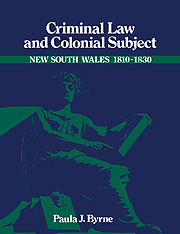Summary
Property
In 1815 James Clarkson, baker of Clarence Street, Sydney, made out a deed of gift to Ann Eaton ‘by whom I have had four children as well as her long and faithful service’. He gave her all his household goods which were set out in a schedule. It read:
One camp bedstead one feather bed, one flock bed, two pair of blankets, one coverlet, eleven chairs, two tables, one iron, one shop counter, two iron pots, one copper kettle, three hot irons, eight china plates, six china pint mugs, one plated teapot, one cream jug, two pairs of scales, one set of brass weights, three bread troughs.
These were the entire contents of the house which he felt were important enough to give to Ann Eaton.
The value of household property can be markedly different from culture to culture. ‘Turn now to the area of mental and emotional connections’, John Demos writes of household sieves, ‘and consider that in the seventeenth century they were also used by conjurors and magicians in obscure ceremonies of fortune telling.’ If the way in which objects were considered differs from one culture to another, divisions of personal property and responsibility for property in the household also differ. Disputes over these divisions were brought to the courtroom. In this sense, the law, as in cases of convict servants, had access to particular areas and not to others.
- Type
- Chapter
- Information
- Criminal Law and Colonial Subject , pp. 73 - 105Publisher: Cambridge University PressPrint publication year: 1993



